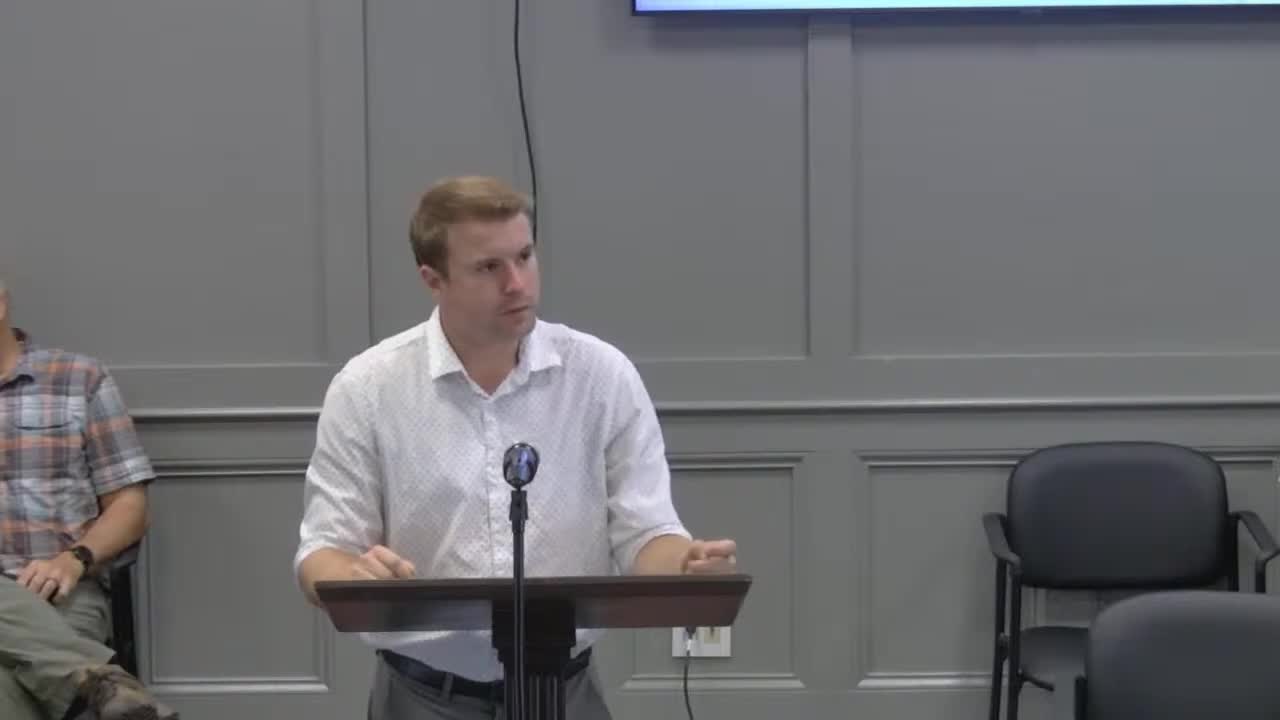Scott County discusses agricultural land use amid rising 5 acre tract pressures
June 07, 2025 | Scott County, Kentucky
This article was created by AI summarizing key points discussed. AI makes mistakes, so for full details and context, please refer to the video of the full meeting. Please report any errors so we can fix them. Report an error »

In a recent work session of the Scott County Fiscal Court, officials engaged in a comprehensive discussion about the future of agriculture in the region, highlighting the challenges posed by increasing land divisions and the impact of zoning regulations. The meeting, held on June 6, 2025, focused on the preservation of agricultural land, a cornerstone of Scott County's identity.
The court began by addressing concerns raised by agricultural stakeholders regarding the proliferation of 5-acre tracts, which have been a standard since 1992. Over the past decade, the county has seen a significant loss of larger parcels, with 50 large agricultural parcels disappearing between 2010 and 2024. This trend has raised alarms about the sustainability of farming in the area and the potential for increased housing developments that could further strain agricultural resources.
A key takeaway from the discussions was the need to strike a balance between development and agricultural preservation. The court has committed $500,000 in this year's budget to a Purchase of Development Rights (PDR) program aimed at protecting prime farmland. The goal is to evaluate the effectiveness of this initiative over the next decade, with hopes of preserving up to 2,000 acres of farmland if successful.
The meeting also introduced the idea of forming an Agricultural Policy Advisory Group to explore strategies for land use and zoning adjustments. Recommendations from this group included revisiting the minimum lot size for residential development, which currently stands at 5 acres. Some stakeholders expressed a desire to increase this minimum to protect agricultural land, while others suggested that in areas with adequate infrastructure, smaller lots could be permissible.
Another significant topic was the potential for amending cluster development regulations. Currently, these regulations are rarely utilized due to their complexity and the financial burden they impose on developers. The court discussed the possibility of simplifying these regulations to encourage more cluster developments, which would allow for higher density housing while preserving larger tracts of land for agricultural use.
The discussions underscored the complexity of balancing growth with the preservation of Scott County's agricultural heritage. As the court prepares to send recommendations to the planning commission for further review, the community awaits the outcomes of these deliberations, which could shape the future landscape of Scott County for years to come. The next steps will involve careful consideration of the proposed changes and their implications for both residents and the agricultural community.
The court began by addressing concerns raised by agricultural stakeholders regarding the proliferation of 5-acre tracts, which have been a standard since 1992. Over the past decade, the county has seen a significant loss of larger parcels, with 50 large agricultural parcels disappearing between 2010 and 2024. This trend has raised alarms about the sustainability of farming in the area and the potential for increased housing developments that could further strain agricultural resources.
A key takeaway from the discussions was the need to strike a balance between development and agricultural preservation. The court has committed $500,000 in this year's budget to a Purchase of Development Rights (PDR) program aimed at protecting prime farmland. The goal is to evaluate the effectiveness of this initiative over the next decade, with hopes of preserving up to 2,000 acres of farmland if successful.
The meeting also introduced the idea of forming an Agricultural Policy Advisory Group to explore strategies for land use and zoning adjustments. Recommendations from this group included revisiting the minimum lot size for residential development, which currently stands at 5 acres. Some stakeholders expressed a desire to increase this minimum to protect agricultural land, while others suggested that in areas with adequate infrastructure, smaller lots could be permissible.
Another significant topic was the potential for amending cluster development regulations. Currently, these regulations are rarely utilized due to their complexity and the financial burden they impose on developers. The court discussed the possibility of simplifying these regulations to encourage more cluster developments, which would allow for higher density housing while preserving larger tracts of land for agricultural use.
The discussions underscored the complexity of balancing growth with the preservation of Scott County's agricultural heritage. As the court prepares to send recommendations to the planning commission for further review, the community awaits the outcomes of these deliberations, which could shape the future landscape of Scott County for years to come. The next steps will involve careful consideration of the proposed changes and their implications for both residents and the agricultural community.
View full meeting
This article is based on a recent meeting—watch the full video and explore the complete transcript for deeper insights into the discussion.
View full meeting
